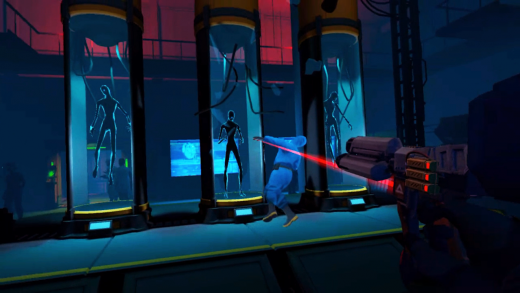If you love capturing your adventures, from mountain biking trails to underwater dives, an action camera is a must-have in your gear bag. The best action camera delivers crisp footage, rugged durability and the flexibility to shoot in just about any environment — including in the rain, snow or under water. These compact, often wearable devices are built to go where your phone or mirrorless camera simply can’t, offering features like image stabilization, wide angle lenses and impressive video resolution for smooth, immersive footage.
Many models now support HDR for vibrant colors, slo-mo for dramatic effect and advanced settings like adjustable aspect ratio and frame rates. Some are even designed as a single-lens solution that can still give you stunning results, without the complexity of multi-camera rigs. And if you’re planning long shoots or travel adventures, don’t forget to look for extra batteries and a reliable SD card — two essentials that make a big difference in how much you can capture on the go.
Whether you’re new to the world of video cameras or you’re a seasoned pro, this buying guide covers our top picks across different price points and use cases. From high-end rigs to the best waterproof camera options, we’ll help you find the best action cam with the compatibility and features you need to capture every epic moment.
Quick Overview
Best action cameras for 2025
Features: Waterproof 10m, stabilization, timelapse, microphone, voice control | Connectivity: Wi-Fi, Bluetooth, USB-C | Storage media: microSD | Sensor: 1/1.9″ CMOS | Photo resolution: 27.13MP (5568×4872) | Video resolution: 5.3K | Video format: MP4 | Optical zoom: 2x | Internal storage capacity: None
GoPro’s Hero 13 is still the best action camera overall, even with DJI nipping at its heels. While it hasn’t changed much from the Hero 12 on the inside, outside is a whole new story. It’s now available with a new family of modular lenses called the HB series (ultra-wide, anamorphic and macro), making it far more versatile. It also has a slightly bigger battery that allows longer capture times — up to 90 minutes for 4K 30fps video.
Other specs remain the same, including resolution up to 5.3K at 60fps in 10-bit color with high data rates, and 8:7 capture that uses the entire sensor. Otherwise, the Hero 13 still has the best digital stabilization (aka Hypersmooth) of any action camera, a full-color front screen and the best image quality in its class. It also has the widest range of accessories, with everything from mounts to waterproof remotes to harnesses. The main drawback is the mediocre low-light capability — one area where DJI’s Osmo Action 5 Pro is superior.
Features: Waterproof 20m (without case), 60m (with waterproof case), subject tracking, slow motion, timelapse, stabilization, fast charging | Connectivity: Wi-Fi, Bluetooth | Storage media: microSD | Sensor: 1/1.3″ CMOS | Photo resolution: 40MP (7296×5472) | Video resolution: 4K | Video format: MP4 | Optical zoom: Not specified | Internal storage capacity: 64GB
Read our full DJI Osmo Action 5 Pro review
DJI has dominated the drone and gimbal categories, but action cams seemed to vex the company. It finally broke that jinx with the Action 5 Pro, which stands up well to the GoPro 13. Its best feature is the large 1/1.3-inch sensor that makes it better than its rival in low light. It also tops the action cam battery life charts at well over two hours while shooting in 4K 60p. Another nice feature is 47GB of internal storage, a big help if you fill or forget your microSD memory card. And the Osmo Action 5 Pro works directly with DJI’s noise-cancelling Mic 2 and Mic Mini wireless microphones, providing an easy way to record high-quality sound.
The Action 5 Pro’s main downsides are relatively low resolution and slightly poorer stabilization compared to the competition. DJI’s device tops out at 4K 120fps, which is lower than the Go Pro Her 13’s f.3K 60fps (both can record log, though). And while the DJI camera’s stabilization is capable, it doesn’t quite match the excellence of the GoPro 13.
Features: Waterproof 10m, subject tracking, slow motion, timelapse, stabilization, 360-degree capture | Connectivity: Wi-Fi, Bluetooth, USB-C | Storage media: microSD | Sensor: 1/2” | Photo resolution: 72MP (11904×5952) | Video resolution: 8K (360 mode), 4K (Single-Lens/Me-mode) | Video format: MP4 | Optical zoom: Not specified | Internal storage capacity: None
Cameras that can record 360-degree video can perform a nice trick: letting you reframe action after you shoot it or capture immersive video for virtual reality. Insta360 simply dominates this category, with no rival even close to its latest X4 model. It captures action at up to 8K 30fps or 5.7K at 60fps, providing more detail when you reframe it to 16:9 for viewing on a regular screen. At the same time, the Me Mode that produces flat video (with automatic selfie stick removal) has been upgraded from a maximum 2.7K 30fps to 4K 30fps.
The X4 now has removable lens guards included to protect the lenses from damage in rough shooting conditions. It also offers solid battery life, waterproofing to 10m and a free editing app. However, low-light capability slightly lacks next to the Hero 13 and Action 5, and the 8K video files are huge.
Features: Subject tracking, slow motion, timelapse, stabilization | Connectivity: Wi-Fi, Bluetooth | Storage media: microSD | Sensor: 1” CMOS | Photo resolution: 9.4MP | Video resolution: 4K | Video format: MP4 | Optical zoom: Not specified | Internal storage capacity: None
Read our full DJI Osmo Pocket 3 review
Late in 2023, DJI unveiled the Osmo Pocket 3 and I called it “maybe the only vlogging camera you need.” It has a big one-inch sensor, which is the same size as the one on Sony’s ZV-1 II compact camera. That boosts image quality considerably, particularly in low light. It also has a new, large swiveling touchscreen that makes it easier to switch between horizontal and vertical video.
What really makes it great for vlogging are the follow modes combined with face tracking. If you’re working solo, you can simply set it up and it’ll rotate and tilt to follow you around. That also applies for walk-and-talk vlogging, so you don’t have to worry about focus or even pointing the camera at yourself. There’s very little not to like about the Osmo Pocket 3, but it’s not ideal for photos due to the reduced resolution, and it’s also quite expensive.
Features: Waterproof 18m (without case), 60m (with waterproof case), subject tracking, slow motion, timelapse, stabilization | Connectivity: Wi-Fi, Bluetooth | Storage media: microSD | Sensor: 1/1.3-inch CMOS | Photo resolution: 10MP | Video resolution: 4K | Video format: MP4 | Optical zoom: Not specified | Internal storage capacity: None
With the arrival of the Osmo Action 5, the Action 4 often goes on sale at very attractive prices. You’re not giving up much in comparison to the Action 5 Pro — it has the same 1/1.3-inch sensor that delivers excellent video quality, especially in low light. And it also comes with a D-LogM profile that boosts dynamic range in tricky lighting conditions, like skiing in the trees on a sunny day. The main reason to buy an Action 5 Pro instead is its built-in 47GB of storage, slightly better battery life and a higher bit rate that reduces pixelation. If those things aren’t critical, DJI’s Osmo Action 4 can currently be found for half the price.
Features: Waterproof 12m (without case), 60m (with waterproof case), subject tracking, slow motion, timelapse, stabilization, dash cam | Connectivity: Wi-Fi, Bluetooth, USB-C | Storage media: microSD | Sensor: 1/1.3-inch CMOS | Photo resolution: 50MP (8192×6144) | Video resolution: 8K | Video format: MP4 | Optical zoom: Not specified | Internal storage capacity: None
Insta360 also builds regular, non-360-degree action cameras and the Ace Pro 2 is ideal for creators. It’s the only one available that shoots at 8K 30fps (or 4K at up to 120 fps), providing spectacular detail, and the 1/1.3-inch sensor is solid in low light. Importantly for vloggers, it comes with a large flip-up screen that makes it easier to frame yourself when filming. It’s not nearly as nimble as rivals, however, as that flipping screen adds weight and size, making the Ace Pro 2 both bulkier and heavier than its competition.
What to consider before choosing an action camera
Action cameras have certain traits that separate them from regular cameras or smartphones. The most important is ruggedness that makes them resistant to water, dust and shocks. Most action cameras are now waterproof cameras without the need for a separate enclosure. At the same time, you can purchase housing accessories to make them waterproof to even greater depths.
Video quality is also key. Every model we recommend goes to at least 4K 60fps, but some models like GoPro’s latest Hero 13 boost video resolution up to 5.3K 60fps, or even 8K 30p with the Insta360 Ace Pro 2. That allows you to crop in on shots and capture vertical video at higher resolutions for social media. Another nice feature is log video that improves dynamic range when filming on sunny, contrasty days — and many newer models now support HDR for even more vibrant footage. Plus, if you film in dim environments, you’ll want the largest sensor possible for the best low-light performance, much like with high-end video cameras or mirrorless systems.
ADVERTISEMENT
Advertisement
For activities with bumps and jolts like mountain biking, image stabilization is incredibly important. You want your video to look smooth, but still need to convey the thrill and speed of the action. The Hero 13 is still the top pick in this regard, delivering jolt-free video that makes the viewer feel like they’re going down the bike trail or ski slope, with no annoying digital artifacts. DJI and Insta360’s products are good, but not quite at that level yet.
Some action cameras are easier to handle and use, so take that into account as well. You’ll want bright and colorful displays both front and back, buttons you won’t have to fumble to find and easy-to-use menus. Remote control is another factor that can ease operation. And you’ll want to check which software is available to improve image stabilization, edit video, remove selfie sticks and more. Also, look out for compatibility with third-party accessories or apps that can expand what your camera can do.
Then there’s the area of accessories. Do you need helmet or chest mounts, extra batteries, waterproof housings, or a fast SD card? GoPro has the largest number of those, but DJI makes handy wireless mics that connect directly with its cameras. And of course, battery life is critical for action shooting as it’s hard to change one when you’re out surfing.



